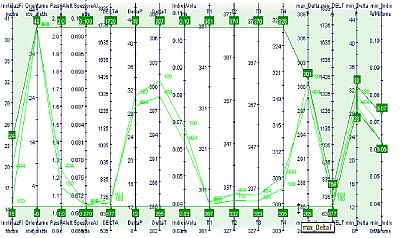
Shape optimisation tools for CFD analysis: ANSYS CFX, ProEngineer and modeFRONTIER
Coccia Enrico - Bitron (Italy)
Trabucco Diego - EnginSoft (Italy)

PRESENTATION
Abstract
The purpose of PTC (positive temperature coefficient) auxiliary heaters for automotive components is to provide comfortable warmth and improved safety (thanks to ice-free windscreens) to the car occupants. During the last years the need to manufacture high performance products by means of a robust design process has turned out to be a more and more stringent requirement. In particular, Bitron's target is to develop a PTC auxiliary heater that sets (and reaches) new performance and flexibility standards. The present study is about the design of an alluminum sheet for heating system, performed with the help of fluid dynamics simulations. The PRO/E model has been linked to a fluid dynamics software (ANSYS CFX) and afterwards integrated into a modeFRONTIER workflow, by allowing the free variation of a number of geometrical parameters.
The specific aim of this analysis was to find the correct sheet geometry, able to guarantee a low pressure drop and a high heat exchange, but also to reduce the use of aluminum and optimize performance and cost of the product. The reference case was generated on the basis of the experience and available literature. As the computational time required to simulate a single case was huge, a rather limited number of designs has been studied and, starting from these results, suitable response surfaces have been created by means of the modeFRONTIER capabilities: different solutions were therefore selected (and numerically validated), among which the designs with higher performance in terms of the fixed targets were selected.
